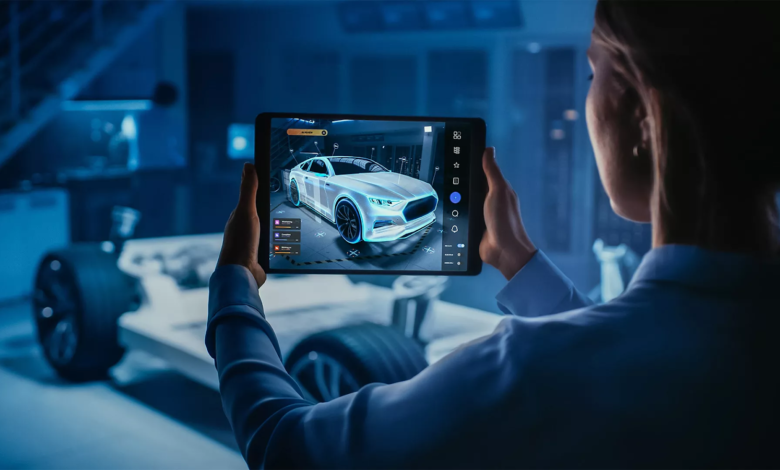The Future of Vehicle Inspections: AI, 3D Vision, and Automation

Vehicle inspections have been unchanged for decades across industries like insurance, car rentals, dealerships, and fleet management. Walk into any service facility today and you’ll see the same process that existed twenty years ago: someone with a clipboard walking around a vehicle, documenting damage by hand, and making subjective assessments based on personal experience.
Emerging technologies like artificial intelligence, 3D vision systems, and automation are poised to transform vehicle inspections completely. These innovations address longstanding problems while creating new possibilities for how vehicles are assessed, documented, and managed throughout their lifecycle.
Why vehicle inspections are ripe for innovation
Current inspection challenges demand new solutions
Manual inspections suffer from inherent limitations that have become more problematic as business requirements evolve. Time constraints mean that thorough assessments often take 30-60 minutes per vehicle, creating bottlenecks during busy periods. Human subjectivity leads to inconsistent evaluations where identical damage might be assessed differently by different inspectors.
Cost pressures affect every aspect of inspection operations, from labor expenses to equipment requirements. Companies find it difficult to maintain enough inspection capacity without overstaffing during slower periods. Training new inspectors requires substantial time investment, while maintaining consistent standards across large organizations becomes increasingly difficult.
Evolving customer expectations
Today’s customers expect service delivery that comes in line with their experiences with other technology-enabled industries. Instant results, transparent processes, and self-service options have become standard expectations rather than premium features. Traditional inspection methods that require scheduling, waiting, and multiple interactions feel outdated to customers accustomed to digital convenience.
Mobile-first preferences mean customers want to handle routine tasks using their smartphones rather than coordinating with service providers. Real-time updates and immediate access to results are considered baseline requirements. Transparency about assessment methodology and findings builds trust while reducing disputes about condition evaluations.
Technology readiness
Advances in artificial intelligence, computer vision, and mobile technology have reached maturity levels that make automated vehicle inspection both technically feasible and economically viable. Processing power, camera quality, and algorithm sophistication have improved dramatically while costs have decreased significantly.
AI: From assistive tool to autonomous evaluator
Artificial intelligence has evolved from a supporting technology to a comprehensive solution capable of handling complete vehicle assessments. Modern AI systems can evaluate vehicle conditions with remarkable accuracy while generating detailed reports that support business decision-making.
Computer vision detects and analyzes damage
AI-powered computer vision systems can identify various types of vehicle damage by analyzing digital photographs. These systems recognize scratches, dents, paint damage, broken parts, and panel deformation with consistency that eliminates human variability. The technology works with standard smartphone cameras, making it accessible without specialized equipment.
The technology extends beyond obvious damage to identify subtle indicators that human inspectors might miss. Paint stress patterns, panel alignment issues, and early signs of corrosion can be detected before they become serious problems requiring expensive repairs.
Real-time inspection benefits
AI inspection systems deliver results within seconds of receiving vehicle images, enabling immediate decision-making rather than waiting for human assessment. This speed improvement dramatically enhances customer experience while enabling businesses to process more vehicles with existing resources.
Real-time processing supports dynamic business operations where quick decisions about vehicle condition affect operational efficiency. Car rental companies can immediately assess return vehicles and process new rentals. Insurance adjusters can evaluate claims instantly rather than scheduling inspection appointments.
Immediate availability of detailed inspection reports enables faster integration with downstream business processes. Parts ordering, repair scheduling, and customer communication can begin immediately based on AI assessment results rather than waiting for manual evaluation completion.
3D vision: Moving beyond flat images
Traditional vehicle inspections depend on two-dimensional photographs that can miss important details about damage depth, panel alignment, and structural integrity. Three-dimensional vision systems include these limitations by creating apt geometric representations of vehicle condition.
Advanced sensing technologies
3D vision systems employ various technologies to capture detailed geometric information about vehicles. Lidar sensors take help of laser pulses to measure distances with millimeter-level precision, creating in-depth point clouds that show vehicle surfaces. Stereo camera systems analyze differences between multiple images to calculate depth information.
Time-of-flight cameras measure the time required for light to travel to vehicle surfaces and return, enabling rapid capture of depth information across entire vehicle sections simultaneously. This technology enables quick scanning of large areas while maintaining measurement accuracy.
Comprehensive damage detection capabilities
3D vision systems excel at identifying damage types that are not easy or impossible to detect using traditional photographic methods. Subtle dents that don’t show clearly in flat images become obvious when depth information reveals surface deformation. Panel gaps and alignment issues are precisely measured rather than subjectively assessed.
Paint and surface quality evaluation benefits from 3D analysis that can detect variations in surface texture, gloss levels, and color consistency. These measurements help with the quality control applications and help identify refinishing work that may not be immediately obvious through visual inspection.
Integration with AI analysis
3D vision data enhances AI analysis capabilities by providing geometric context that improves damage assessment accuracy. Depth information helps AI systems distinguish between actual damage and visual artifacts caused by lighting, shadows, or camera angles.
Combined 3D and AI analysis enables evaluation of repair feasibility based on geometric constraints and access limitations. The system can make us understand whether specific repair techniques are viable given the vehicle’s geometric configuration and damage location.
Automation: Streamlining the entire inspection process
Automation extends beyond damage detection to encompass the complete inspection workflow, from initial vehicle presentation through final report delivery. Integrated automation systems reduce human involvement while improving consistency and speed throughout the entire process.
Workflow automation capabilities
Automated inspection systems can guide vehicles through assessment processes without human intervention. Sensor-activated gates, positioning systems, and automated instructions direct drivers through detailed inspection sequences that make sure complete coverage while reducing time requirements.
Data processing automation handles image analysis, damage evaluation, and report generation without manual intervention. Results flow automatically into business systems for immediate use in scheduling, pricing, or customer communication processes.
Integration benefits
Seamless integration with existing business systems enables automated inspection data to support immediate operational decisions. Inventory management systems can automatically order necessary parts based on damage assessments. Scheduling systems can allocate repair bay time based on estimated work requirements.
The shift from reactive to proactive
The future of vehicle inspections involves moving beyond simple damage documentation toward predictive assessment that enables proactive maintenance and problem prevention. Advanced technologies enable identification of developing issues before they become serious problems.
Competitive advantages
Organizations that include advanced vehicle inspection technologies gain advantages in service speed, accuracy, and customer satisfaction. These benefits change into improved customer retention, operational efficiency, and profitability compared to competitors using traditional methods.
Market differentiation occurs when companies can offer inspection services that are faster, more accurate, and more convenient than traditional alternatives. This service quality advantage attracts customers while supporting premium pricing for superior capabilities.
Innovation leadership positioning helps organizations establish reputations as technology-forward companies that invest in customer-beneficial solutions. This positioning supports long-term competitive advantages in increasingly technology-driven markets.
Conclusion
The future of vehicle inspections is being shaped by artificial intelligence, 3D vision technology, and comprehensive automation that address fundamental limitations of traditional manual processes. These technologies don’t just improve existing inspection methods—they enable entirely new approaches to vehicle assessment that provide better accuracy, faster results, and more comprehensive insights.
Businesses and companies that embrace these innovations position themselves for success in markets where customer expectations continue evolving toward digital-first experiences.



